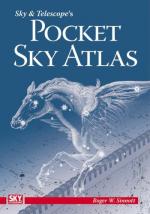|
This section contains 2,675 words (approx. 9 pages at 300 words per page) |

|
In 1962, the National Academy of Sciences recommended the construction of a large optical telescope. More revolutionary than any of its predecessors, however, this one would be the first telescope rocketed into orbit to capture visible light waves. Astronomers explained to all potential sponsors that a telescope would be placed in orbit a few hundred miles above the earth's polluted and distorting atmosphere, with a primary mirror one-half that of Palomar's yet capable of producing photographs ten times sharper. Delayed many years by congressional debate and then by the 1986 explosion of the Challenger shuttle, the Hubble Space Telescope (HST), named to honor the preeminent astronomer Edwin Hubble, blasted into orbit in 1990 and immediately became the world's most publicized and most talked about telescope.
Escaping Earth's enveloping atmosphere gives an orbital telescope three distinct advantages over land-based instruments. First, an orbital telescope does not lose light coming from outer space...
|
This section contains 2,675 words (approx. 9 pages at 300 words per page) |

|




